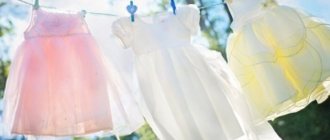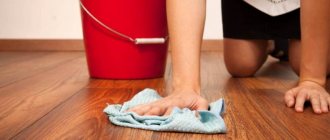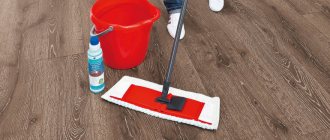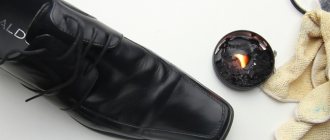In everyday life, a person often encounters electrification and electrostatics, which manifests itself due to too dry air when any objects come into contact. Because of this process, clothes made of synthetics, polyester, natural silk or wool stick to the body, shock with small currents and sparkle.
Things do not flow and lose their shape, the appearance of the products deteriorates and discomfort is felt when worn.
Electrostatics can occur when combing hair and creating dust. To get rid of such problems, various antistatic agents are used. Antistatic is a chemical composition, after treatment with which things flow, do not stick to the feet and are not electrified.
In addition, this product can be used to permanently get rid of dust and disinfect carpets and upholstered furniture.
But what if you don’t have an antistatic agent on hand? Is there a replacement for this product? An alternative to store-bought antistatic agents can be made at home. We will learn about this in this article.
Types of antistatic agents
Today, various types of products are produced. An effective and easy to use spray that can be easily sprayed onto clothing. There are compositions containing ethyl alcohol and water. The first antistatic agent copes with the problem in a few seconds, but at the same time emits a sharp unpleasant odor and toxins.
Products containing ethyl alcohol may cause eye irritation and an allergic reaction. Note that the unpleasant odor lasts quite a long time, so when using the spray you must open a window or vent, or it is better to spray the composition on the balcony.
In addition, after using this antistatic agent, clothes need to be washed longer and rinsed more thoroughly.
Water-based antistatic agents are safer and will be a suitable replacement for the classic product for those who suffer from allergies. They do not leave an unpleasant odor or release toxins. In addition, a paste is produced as an antistatic agent, which must be dissolved in water.
You can also find special fabric softeners containing antistatic agents. Add conditioner during rinsing and get rid of the problem even at the washing stage.
In addition, you can make an antistatic agent at home using available materials. To do this, use vinegar, fabric or hair conditioner, citric acid or juice, soda or table salt. Let's find out what we can use to replace antistatic agents for clothing.
Useful tips
Any product in our wardrobe requires a certain attitude towards itself. Then there are fewer problems with it in operation. Here are some tips to help owners of synthetic clothing:
- Follow the recommendations for caring for the product - washing, ironing, drying modes, storage conditions.
- Do not wash synthetics in too hard water. As a last resort, use special softeners (Calgon or similar).
- If you are not allergic, add conditioner during washing (you can replace it with vinegar).
- Do not store such products in cramped cabinets. When they come into contact with each other, they will begin to become electrified even before contacting your skin. Try to hang them separately from each other.
- Reconsider clothing combinations. It often makes sense to combine it in such a way that the set includes items made from natural fabrics along with synthetic ones.
Static electricity is a rather unpleasant phenomenon. In this case, things not only stick unsightly to the body, but also periodically create small current discharges. Crackling and discomfort can be relieved in different ways. It is not necessary to buy ready-made industrial products. Quite affordable homemade formulations sometimes turn out to be much safer, but no less effective. Besides, they are cheaper.
How to make antistatic hair
Due to a lack of vitamins, temperature changes and negative environmental influences, hair becomes dry, brittle and electrified. Products and hairsprays that are designed to solve this problem contain aggressive and harmful components.
Such compositions will relieve electrification, but will worsen the health of the hair. Therefore, it is better to make a homemade hair antistatic agent from natural, safe ingredients.
Aromatic oils are a suitable replacement for hair antistatic agents. Add a few drops of any essential oil to clean water. Rose and lavender work well.
Mix and pour into a spray bottle. Apply the product every day. Alternatively, apply a couple of drops of aromatic oil to a wooden comb and comb your hair for five to ten minutes.
When using products containing essential oils, be careful not to get them on your skin, otherwise irritation or an allergic reaction may occur.
Mineral water or plain water with lemon juice in a ratio of 1 to 5 will help eliminate hair electrification. Moisten your hands with the product and run through the strands. A similar result will be obtained if you apply a small amount of cream to your hands and lightly run through your hair.
Secrets of housewives
Experienced housewives always invent something that benefits health and saves the budget. This time we will reveal the secret - what and how to replace the antistatic agent without leaving home. Every woman always has products in her everyday life that have antistatic properties.
Let's identify popular home remedies with an antistatic effect:
- soap;
- water;
- vinegar;
- soda;
- salt;
- cream;
- lemon;
- fabric softener;
- hair conditioner.
Let's consider several ways to use the above tools:
- Dry soap is used. It is rubbed onto the back of the product. The effectiveness of the method lasts about a day. It is important not to get your clothes dirty. Before applying, you should try to rub a small area of the product from the inside out, and check if it has appeared outward. If there are no unnecessary manifestations, you should continue the procedure.
- A common method in the form of spraying water is known to many. You need to arm yourself with a spray bottle, fill it with water and spray it on the desired part of the clothing. The main thing is not to overdo it with water, otherwise it will lead to very wet clothes, and the antistatic effect will not be achieved. This method, unfortunately, will not save you for a long time. But for a short walk or party, it’s a great way not to lose face. The convenience is that the method is simple. Water is practically available, you don’t have to carry it with you in your purse. And don’t think that a spray bottle is needed for extreme cases. Your palms are perfect here. Apply with wet palms to the lining fabric and do not miss the important moments of your life.
- In addition to ordinary water, you can use a saline solution. To do this, add 1 tsp to a container (10 l) of water. salt. The effect is guaranteed. The effectiveness of the solution cannot be distinguished from a purchased antistatic agent.
- Cool lemon water is an excellent antistatic agent. In addition, it will give a light and pleasant aroma to things.
- Rinsing clothes in vinegar is a good option to prevent static build-up. This method helps remove excess soap from things. With the addition of soda (1 tsp) in a 6:1 ratio, the material will become soft and fragrant.
- Another method using vinegar. Here, air conditioner and water are additionally added. Use 3 parts vinegar, 2 parts conditioner and 6 parts water. Half a glass of this mixture will rid things of static and unpleasant odors. This method is widely used for carpeting.
- A 10:2 mixture of water and fabric softener is used as a spray. The product is poured into a container with a spray bottle and sprayed onto the product itself. It is good at eliminating electric shocks. If desired, it can be used to treat carpets.
- Using cream is one of the easiest ways to eliminate current from clothing. The cream is applied to the necessary parts of the body. A film is formed, which will serve as a barrier to the electrification of the wardrobe.
5 ways to quickly remove unpleasant smell from carpet
How to make antistatic dust
If dust quickly accumulates on furniture and carpets, you can also use an antistatic agent. It will remove dust for a long time and disinfect covers, upholstered furniture and carpets.
To prepare such an antistatic agent with your own hands, take a glass of water, 9% vinegar in a volume of 50 grams, two teaspoons of olive oil and a few drops of lavender or rose essential oil.
Pour the resulting solution into a spray bottle and periodically moisten the surfaces where the greatest amount of dust accumulates. The product can also be poured into a washing vacuum cleaner. If you are using a regular vacuum cleaner, first spray the mixture onto the carpet and then vacuum.
To reduce dust settling on objects, wipe them with a woolen cloth and, while cleaning, also drop two or three drops of essential oil onto the fabric. What else will help you effectively and permanently get rid of dust, read the link.
What to replace
The disadvantages of the product obtained industrially include a strong odor and the chemical composition of components that can provoke an allergic reaction. In this case, safe folk methods will come to the rescue.
Let's look at some of them:
- If you add vinegar when rinsing your clothes after washing, they will not generate static electricity.
- When rinsing things, you need to take 6 tablespoons of baking soda and mix with 1 tablespoon of vinegar. Add composition water. The clothes will not be electrified and will become soft to the touch.
Another recipe for rinsing clothes is prepared according to this recipe:
- 3 tablespoons vinegar;
- 2 tablespoons of hair rinse;
- 6 tablespoons of water.
The composition must be thoroughly mixed and used instead of fabric softener.
- Citric acid is good at removing static electricity. To do this, you can use lemon juice from half the fruit or a teaspoon of dry citric acid diluted in a bucket of water.
- To prevent electrification after washing, prepare a solution of 3 tablespoons of fabric softener and a glass of water. The composition must be applied through a fine spray bottle.
- The composition for spraying can be prepared from 1 teaspoon of salt dissolved in 1 bucket of water.
- If you rub the underside of your clothes with dry toilet soap, it will not become electrified. This must be done extremely carefully, having first tested it on a small area of fabric.
- To eliminate fabric static, it is enough to moisten it with clean water, because an electric charge occurs due to excessive dryness.
- If the material of your dress or trousers sticks to your body, you can use skin moisturizers. For example, apply moisturizer or oil to your body.
Preventing static electricity from things
If you are very annoyed by the sticking and cracking of things, you can completely abandon synthetics in favor of natural fabrics. But this is too radical a solution. It will be difficult for women to refuse nylon tights, and every second jacket or coat has a synthetic lining. You can reduce static electricity by following these guidelines:
- Try to add fabric conditioner when washing;
- Combine synthetic fabrics with natural ones;
- Use metal coat hangers;
- Attach a pin to your clothing; it will accumulate static discharges;
- Choose shoes with rubber or leather soles. You can buy insoles that have an antistatic effect;
- Humidify the room. Static electricity does not like moisture; it appears more often in winter, when the air in the room becomes dry due to heating. You can use air humidifiers or an economical option: place small containers of water under the batteries.
The choice of a product to eliminate static electricity on clothing is yours. Whether these are effective but harmful chemicals or hypoallergenic folk remedies depends on your preferences. We hope our article gave you all the information to make the right choice.
Ingredients and method of preparing the gel
There are several options for making gel at home, but, as a rule, they contain approximately the same recipes with minor differences. Let's look at one of the most common ways to prepare a gel.
To make your own washing gel, you will need the following components:
- Water – 4 liters;
- 100 grams of laundry or baby soap with neutral PH;
- 100 grams of soda ash.
This recipe can be modified depending on the required amount of gel and its thickness
It is important to maintain the ratio of soda ash and laundry soap, which should be 1:1
It should be noted that soda ash in the gel is absolutely harmless, but in case of direct contact with it, it is better to protect your hands with rubber gloves.
To make the gel have a pleasant smell, you can add a few drops of essential oil to it. But using flavored soda ash to make a gel is not suitable, since it contains active chemicals.
The gel preparation process consists of the following steps:
- Grate laundry or baby soap on a fine grater.
- Place water on the stove and wait for it to boil. Place grated soap shavings into boiling water and stir thoroughly until they are completely dissolved.
- After the soap has completely dissolved, add soda ash to the boiling mixture. Then you must immediately turn off the stove and actively stir the mixture. It is also recommended to periodically remove the resulting foam. Once all the ingredients are completely dissolved, the gel can be considered ready.
- Remove the gel from the stove and wait for it to harden.
- If the gel hardens with the formation of lumps or its consistency takes on a jelly-like form, periodic stirring should be used at intervals of 15–20 minutes.
- After an hour and a half, when the consistency of the gel is still liquid, but not so hot, you need to pour it into the container where it will be stored. This must be done in such a way that the gel occupies two-thirds of the volume of the container. It is better to prepare a suitable container for the gel in advance. For the convenience of subsequent dosing of the gel, it is recommended to choose a vessel with a wide neck (for example, a plastic mayonnaise bucket or a glass jar for preservation).
- If desired, you can add a pleasant aroma to the gel. It is best to scent homemade laundry gel using essential oils. Some housewives pre-prepare an infusion of green tea, which is poured into a container with gel immediately after removing it from the stove. If you want to add fragrance to the gel using essential oils, it is best not to overdo it with its amount and limit yourself to ten to fifteen drops of fragrance.
- After filling the prepared containers with gel, about another hour should pass, after which the manufacturing procedure can be considered complete.
What is it used for?
An antistatic agent is a product based on:
- alcohols,
- silicone,
- surfactant,
- other active ingredients.
The main purpose of its use is to prevent the accumulation of electrical discharges on the fabric , so that after such treatment it stops “beating with current”.
Not only are electrified items unpleasant to wear, they quickly take on a sloppy appearance even after thorough cleaning.
They stick to:
- villi,
- hairs,
- dust particles.
Antistatic agents are the solution to all these problems.
Preventive measures to prevent static electricity
Beginning housewives in caring for synthetic clothing should take note of the following tips:
- Add fabric softener;
- Use antistatic agents (purchased or prepared yourself) before putting on the item;
- The absolute favorites of static electricity are nylon, nylon, lavsan and other materials with a high content of these fabrics. If special products do not help you, stop wearing artificial fabrics. Make a choice in favor of natural materials - cotton, linen, lye.
- If completely avoiding synthetics is not possible, combine options for your look from natural and synthetic fabrics.
- Be smarter than the rest. Carry cream or a small piece of soap with you. They will help you in a hopeless situation.
Choose the right and reliable option for yourself. Remember that products prepared independently inspire much more confidence than purchased ones. Home remedy will save money and health.
Professional products
Antistatic hair spray is a popular product from many companies.
True, each has its own advantages and disadvantages. It is worth considering well-known brands so as not to spend a lot of money searching for your product. Here are the pros and cons of the most sold brands of antistatic agents:
- Estel Professional. Spray for winter care. This product not only removes static charges, but also moisturizes the hair and makes combing easier. The product contains proteins and panthenol that nourish the epithelium of the head. The price of the product is much more affordable (about 600 rubles), but, unfortunately, the spray is absolutely not suitable for some.
- Moisturizing Anti-Static Spray. This is a very affordable antistatic agent and a girl with any income can afford to buy it. However, among the reviews there are often not rosy ones: there are complaints that the spray quickly loses the freshness of the head.
- Frizz-Ease (John Frieda) is one of the few antistatic hair shampoos with a pronounced effect. It adds volume to the hair without weighing it down, forming a weightless veil on the hair that prevents excess friction.
- Anti-Static Spray (Altetrna). This is a dry spray that helps get rid of static charge in rooms with dry air. However, if your hair has already risen like a dandelion, it may not help. In addition, it costs about 2000 rubles. per bottle.
- All-Soft Argan-6 (Redkin). Use it 2 hours before washing your hair and apply it as a hair mask. It works not only as an antistatic agent, but also as a balm, moisturizing and nourishing the strands. But such a product is expensive - 2000 rubles. per bottle 90 ml.
It is clear that everything depends on the individual hair structure and the condition of the scalp. It is also worth remembering: static electricity more often torments women with dry hair, which means it is better to select a product taking these features into account. You can also prepare antistatic hair products yourself, and their properties will not differ in any way from expensive professional products.











